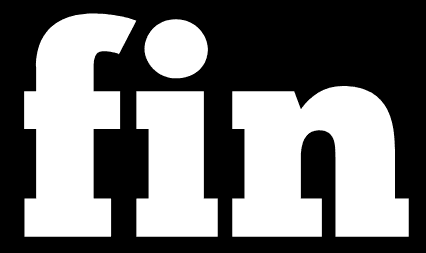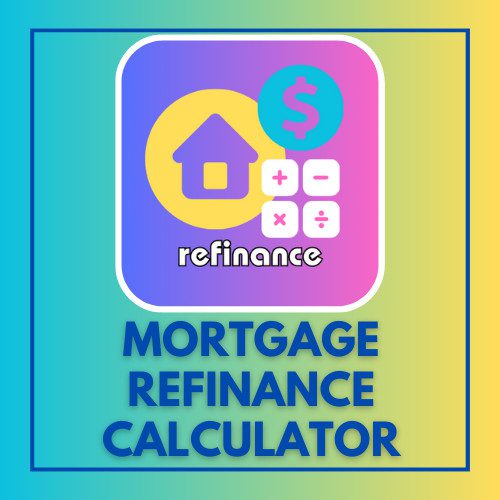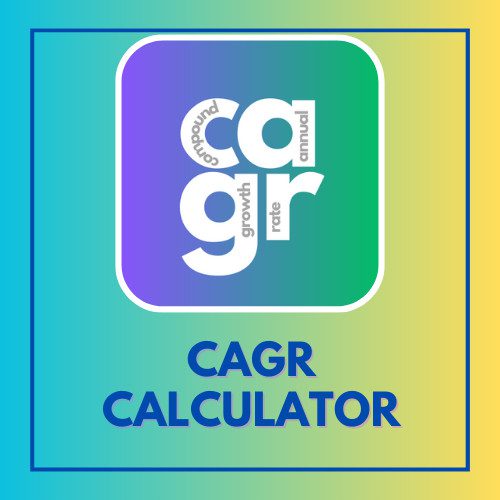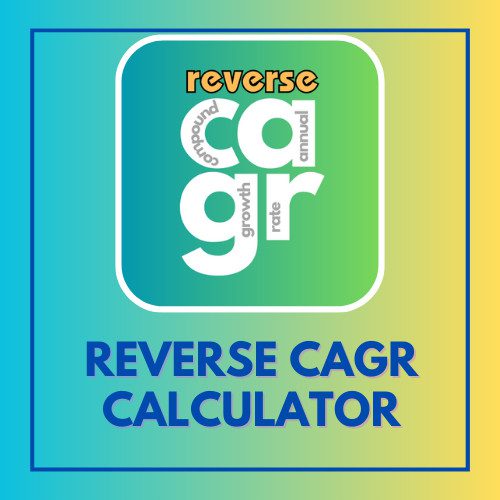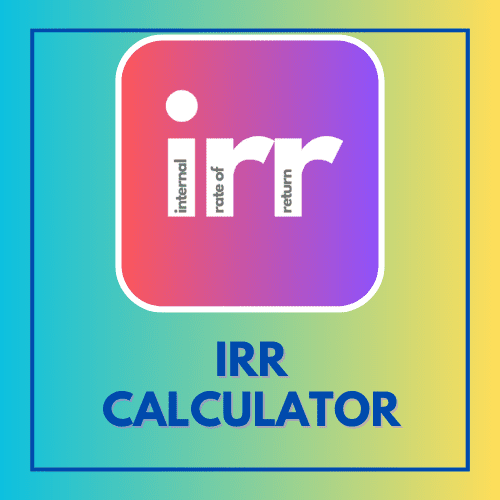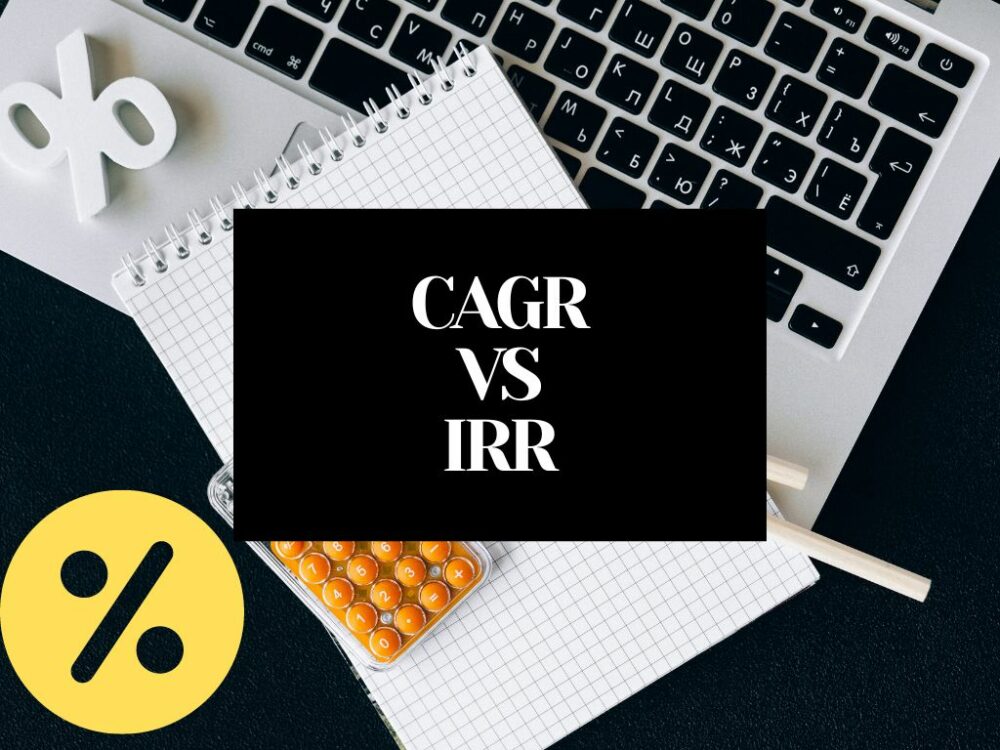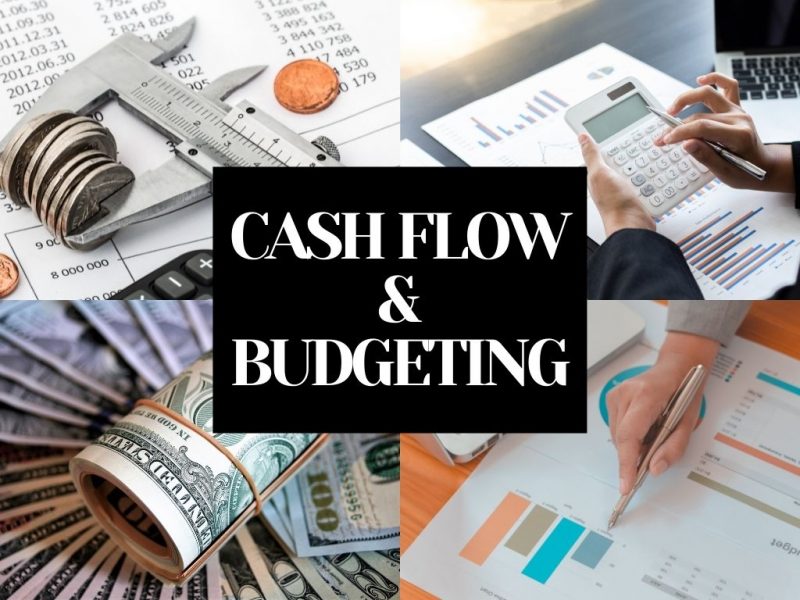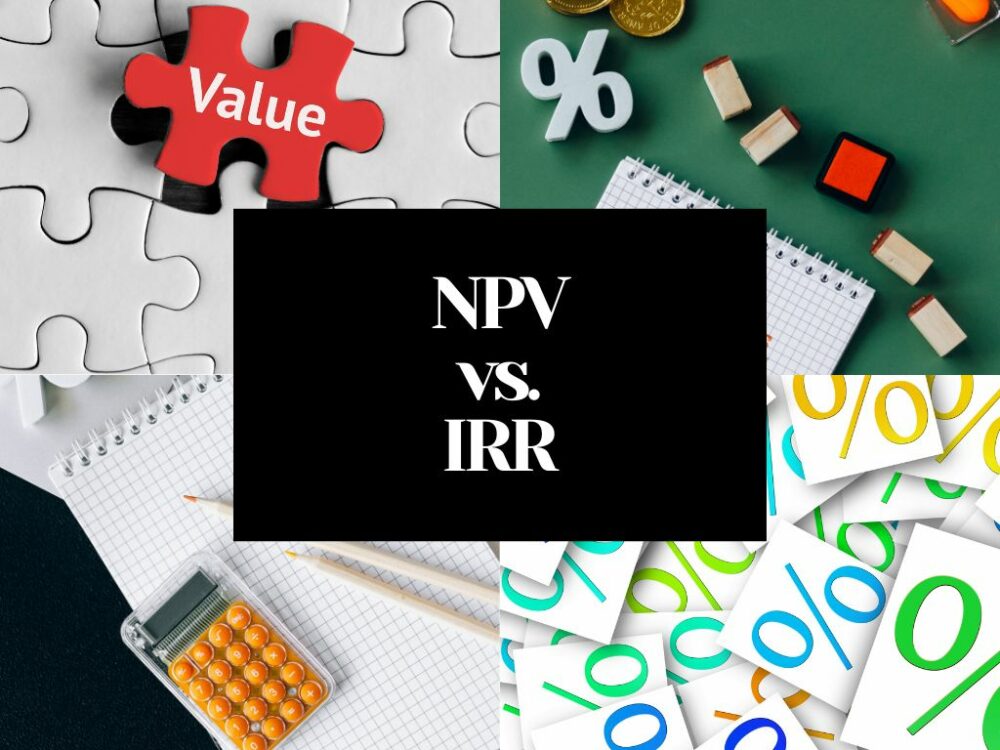This article has been reviewed by Sumeet Sinha, MBA (Emory University Goizueta Business School). Should you have any inquiries, please do not hesitate to contact at sumeet@finlightened.com.
If the idea of budgeting fills you with dread, you’re not alone. Over half of Americans don’t use a budget and can’t cover a $1000 emergency expense using savings.
Steps To Making a Budget (Jump To Section)
Ways To Budget When You’re Broke (Jump To Section)
But as the global economy becomes even less secure, learning how to budget is more important than ever. Taking control of your finances is the first step to financial freedom and long-term security.
In this post, we’ll show you how to build a budget step-by-step. We’ll give you tips to stay on track, track your finances, and the best tools to make the entire process easy.
Why Should You Build a Budget?
Before we get into how to build a budget, it’s important to understand why you should have one.

Helps keep you goal-oriented
Building a budget helps you figure out your long-term goals and then gives you a clear path to work towards them. Without a budget, you’ll slowly bleed money every month and never have quite enough to live the life you want.
Having a budget and knowing why you’re budgeting will keep you on track. That’s the beauty of knowing how much money you have dedicated to each category in your life – overspending becomes much easier to avoid.
You won’t spend money you don’t have
It’s incredibly easy to overspend when you don’t keep track of your money. In 2021, the average credit card debt per household was $5,525, so if you do already spend money you don’t have, you’re not alone.
The main function of a budget is allocating all of your income, so you don’t spend money you don’t have.
Relax when you retire
Budgeting is a great tool to stop overspending, but that’s only part of the picture. Having a functional budget also allows you to save for retirement, meaning you won’t have to worry about finances in old age.
If you’re not already setting aside earnings every month for your retirement, creating a budget will help you build that into your monthly finances.
Prepare for emergencies
Do you have contingency plans in place if your car breaks down or you need repairs on your house? Life is filled with expensive surprises, and having an emergency fund will help reduce some of that financial stress should something go wrong.
If you don’t already have an emergency fund, creating a budget will also help you get started on one.
Figure out your bad spending habits
It’s far too easy to ignore our impulse purchases or poor spending habits when we don’t track our spending and saving. When you have a budget in place, you’ll quickly see where your money is going every month, and you can start working on reigning in those bad habits.
Bestseller Personal Finance Books
Get more sleep
Did you know that money worries can lead to financial insomnia? Around 1 in 7 people lose sleep over their finances, leading to a whole host of health problems.
Having a budget gives you more control over your finances and can actually help you get a more restful night’s sleep.
Understand the Budgeting Process
Before we dive into the steps of how to build a budget, it’s important to understand the process. Everyone will be approaching their finances with different goals and at different stages in their financial journey.

Those with debt will need to start budgeting differently than those without debt. Likewise, those with a higher income will be able to spend more on different categories of their budget.
When you’re going through the stages of building a budget, customize it to fit your situation. For example, if you have debt, paying this off should be a priority.
What Should You Include in a Budget?
The first stage of building your budget is collecting all the information you need to include. Below we’ve listed all of the numbers you’ll need in front of you to create an effective plan.
Income
Start with your total monthly income after taxes, so you know how much you have to work with. This should include all forms of income, including side hustles, investments, etc.
It doesn’t matter if you get paid hourly, weekly, or monthly. Figure out your monthly income to make budgeting for bills easier.
If your monthly income fluctuates, work with the lowest income you receive. More is a bonus, but you don’t want to over-budget on months you don’t make enough.
Savings
Next, have a record of your savings and how much you want to have in your savings. At a minimum, you should plan to have retirement savings and an emergency fund.
It’s never too early or too late to start saving for retirement, so add this to your plan now.
Ideally, your emergency savings should be three months’ worth of wages. This way, if you’re sick and can’t work or you lose your job, you have a buffer to get back on your feet.
Debt repayment
The ultimate goal of budgeting is to live totally debt-free, but that’s just the goal. If you have debt in the form of loans or credit cards, make sure you know your monthly repayments so you can add them to your budget.
It can feel overwhelming checking on debt, but knowing what you owe is important. At this point, it might be worth looking into consolidation or moving to interest-free schemes to save yourself money on your monthly repayments.
General Expenses
Next, make a list of your monthly expenses, including necessities and discretionary spending. This will look different for everyone, but some categories to include are:
- Housing
- Transportation
- Food
- Utilities
- Insurance
- Medical
- Entertainment
- Miscellaneous
The best way to do this is to check the last few statements of your bank account. This will give you the specific amounts and make sure you don’t miss anything.
If you’ve noticed that your income doesn’t cover your expenses, don’t panic. We’ll cover that later. For now, just put together a list of all of your income and expenses, so you know what you have to work with.
Steps To Making a Budget
Now you have all the information you need, let’s get into the step-by-step process of building a budget.

We refer to a personal budget as a Personal Finance Flowchart. The outline below is a general guide for beginners. If you want a more detailed FinPin Flowchart, we have a full personal finance guide giving you much more detail.
Step 1: Calculate your net income
You should already have your income written down from the previous section, but make sure it’s your net income, not your total wages.
If you use your total income, you’ll end up overbudgeting because you think you have more money every month than you do.
Make sure you’ve factored in pension contributions, taxes, healthcare insurance, etc.
If you’re a freelancer, figure out your lowest monthly income based on the last three to six months after expenses and taxes.
Step 2: Track your spending
This one can be tough, but you need to track everything you spend in a month and categorize it.
Start with fixed expenses that are the same every month, and include the date of each bill. For example:
- Utilities
- Mortgage/rent
- Phone bill
- Streaming services
Next, track your spending that fluctuates month to month and categorize it to see where your money is going. For example:
- Groceries
- Take out
- Clothes
- Entertainment
Step 3: Set realistic goals
Now you have your monthly income and all of your outgoings written down, you need to set realistic goals, both long and short term.
Short-term goals are ones you want to accomplish in the next one to three years. Long-term goals, on the other hand, may take decades to reach.
It’s important to set realistic goals, or you will lose motivation to keep working towards them. Your goals might look something like this:
- Save X every month for retirement.
- Save X every year for my daughter’s college fund.
- Cut my spending on monthly take-out by X.
- Pay off X debt in X months/years.
Your goals don’t have to be set in stone, and they will likely evolve over time. But having some short and long-term goals in place will make it much easier to stick to your new budget.
Whenever you want to overspend, you can remind yourself exactly why you’re budgeting and get back on track.
Step 4: Make a plan
Now comes the plan. If your monthly income doesn’t cover your outgoings, you need to find ways to cut back every month. You have two routes to do this:
- Reduce your fixed monthly outgoings as much as possible.
- Cut back on monthly spending.
Start by going through your fixed outgoings and figure out if you can reduce those. For example:
- Get on a cheaper utility plan
- Find a more affordable phone plan
- Negotiate rent with your landlord
- Remortgage to get a better rate
You’ll be surprised how much you can cut expenses by switching to better deals.
Now, look at your monthly spending. This will be personal to you, and it’s important to be realistic with your restrictions. For example, if you buy a Starbucks every morning on your way to work and would be miserable without it, don’t feel like you need to cut that from your budget entirely.
Look for small, easy ways to reduce your outgoings without making your new budget unbearable to stick to you. Some ideas are:
- Joining a more affordable gym
- Meal planning to cut down on groceries
- Setting a monthly limit on take-out or going to restaurants
Step 5: Adjust your spending
Now it’s time to implement your plan. It’s great having a spending plan, but if you don’t follow it every month, your budget won’t work.
Some people find the cash envelope method works best so they can see exactly how much money they have in each of their spending categories.
Others like to set up separate bank accounts for their bills, savings, and extra, so they know they won’t miss important bills.
This will be personal to you, but find a way of tracking and adjusting your spending that helps you stay on track.
Step 6: Review your budget regularly
You should review your budget at least once a month to make sure you’re on track. Perhaps you’ve struggled to reduce your spending in a certain category or have money left over each month from another category.
Continuously reviewing and tweaking your budget will turn it into a habit and make saving money much easier.
Don’t be put off if you struggle to stick to your budget initially. Just like any other skill, budgeting takes time to master.
How To Use Your Budget
Now you have a functioning budget set up, here are some quick tips on using it effectively.

Budget to zero before the month begins
At the end of each month, review your budget and plan the month ahead. When you’re starting out, allocate every dollar of income so you can’t overspend.
This doesn’t mean having no money left in your bank account. Instead, know exactly where all your income is going so you can stay on track.
Remember that every month is different
No two months will be the same, and it can be frustrating when you get started with budgeting. One month you might need to budget for a child’s birthday, whereas you might have a holiday booked the next month.
This is why it’s important to check your finances regularly and be aware of what’s coming up. Once you’ve got used to budgeting, annual expenses like holidays and birthdays will become much easier to budget for.
Start with the most important categories
Always start with the necessities you need to keep a roof over your head and food on the table. Everything else is secondary. For example, you might have a goal of regularly giving to a local charity, but if you are struggling to pay your bills every month, this needs to be a long-term goal you don’t worry about yet.
Pay off your debt
Debt should be a priority when building a budget. The quicker you can pay off debt, the less stressed you’ll be, and the more you’ll be able to save every month.
The snowball debt method is popular. In this case, you focus on your smallest debts first until they’re paid off and then build up to larger ones. People find that having small wins of paying off smaller debts motivates them to work towards larger ones.
If you currently have a lot of debt, know that you’ll have to be much more strict with your budget until you pay it down. But it will be worth it in the long run.
Make a schedule
Using a budget is much easier when you have a set schedule. If you can, set up auto payments for your ongoing bills, so you don’t have to worry about paying for them every month. Also, pick a date every week to do your grocery shopping. Using a budget is much easier when you have set dates for all of your financial obligations.
Cut up your credit cards
When you’re starting out with a budget, it can be tough to stop your reliance on credit cards, but they make budgeting extremely tough. Putting the odd purchase here and there on a credit card quickly adds up, and by the end of the month, you’re over budget.
Not to mention, they usually have steep interest rates, which is money down the drain every month.
Make a commitment to ditch the credit cards and only make purchases once you have the cash saved up in your bank account dedicated to it.
Use cash for certain categories
If you constantly overspend on a certain category, use the cash envelope method. On payday, take the amount of money you have budgeted for that category out in cash and keep it in a labeled envelope.
This makes it much easier to stick to the budget. Once the envelope is empty, you can’t spend any more on that category. It’s also motivating to see how much you have left, which will help you reign in your spending.
Try an online budget tool
If using a pen and paper isn’t working for you, there are tons of online tools you can use to build a budget. We’ve listed some of the best budgeting apps at the end of this post for you to try.
Stop making comparisons
When we spend so much time on social media, it’s hard not to compare our lives to others. But the truth is, we don’t know the financial situation of others, and someone who seems to have it all could be struggling with debt.
Take a step back and quit comparing yourself to others. Focus on yourself and your progress, and be grateful for what you have while working toward financial freedom.
Creating a Backup Budget
A backup budget is a worst-case scenario budget you can fall back on if your income is cut. For this budget, be ruthless with your spending cuts and take away anything that isn’t a necessity.

Hopefully, you’ll never be in a situation where you need your backup budget. But if you lose your job or have an emergency, you’ll be glad you have this contingency in place.
As part of this backup budget, note how to cancel subscriptions or the phone numbers of providers you’ll need to ring. Having all this information to hand will make it much easier to implement your backup budget should the tie come.
Remember, this needs to be a significantly reduced budget, so you’ll also need to be harsh with spending cutbacks.
Sticking to a Budget
Most people can make a budget, but sticking to it is another matter. It’s hard work policing our spending and tracking our finances, so it’s all too easy to slip back into poor spending habits. Here are some tips for staying on track and sticking to your budget.
Sleep on big purchases
Whenever you need to make a large purchase, sleep on it. Whether it’s a new car or a TV, you need to be sure it fits into your budget.
Weigh up the benefits and drawbacks to make sure it’s giving you enough value to be worth the investment.
If you’re really struggling, ask yourself: would I take the item or the cash?
For example, if you’re thinking about getting a new car, ask yourself, if someone offered me the car or £10,000 in cash, which would I take?
If you immediately think about the cash because you need it, that’s a surefire sign you should hold off on the purchase.
Never spend more than you have
If you don’t have the money to buy something, don’t buy it. It’s all too easy to put purchases on a credit card and tell yourself you’ll pay it off next month. The trouble is, you don’t know what next month will bring, and soon you’re spiraling into debt.
It can be tough putting off buying the things we want, but you’ll be glad you stuck to your budget when you have savings to fall back on during tough times.
Try a no-spend challenge
This is a commitment to not spend any money on anything that’s not a necessity. So, after your bills and groceries, you don’t spend a dime. It’s a challenge because things will come up that you need, and it’s your job to find workarounds.
You might challenge yourself to a week, two, or even a month. It’s a shock to the system but enlightening when you discover just how resourceful you are.
Plan your meals
One of the easiest categories to go over budget is the grocery store. Groceries are a necessity, so it’s easier to allow ourselves to indulge since it’s not something we can avoid completely.
To stop yourself splurging at the grocery store, plan your meals in advance and make a list of the groceries you need. Then commit to only buying what’s on your list.
If you tend to splurge on treats, try eating a meal before shopping. Food shopping on an empty stomach makes us much more likely to splurge on snacks and food we don’t really need.
Do your grocery shopping online
If you struggle to reign in your spending in the grocery store, shop online. It eliminates the habit of browsing and means you’ll only get what you need. This has the added bonus of making you eat healthier, too, since you’ll cut down on extra snacks and treats.
Pay yourself
Another great way to stick to your budget is by paying yourself every payday. Even if it’s only $10 a month in the beginning, put money aside every month that’s for you to do what you want.
When we budget every dollar we earn, it can feel like we’re working for nothing. Having this little bit of money for ourselves is a great motivator, especially when we see it start growing.
Think in terms of labor
You work hard for your paycheck every month, but it’s all too easy to forget that we’re spending that labor when we buy things.
Whenever you’re going to make a purchase, remind yourself how many hours you worked to get it. For example, if you’re thinking about buying a coat for $100 and you make $15 an hour, you actually worked 6.5 hours to buy that coat.
Most of the time, the hours you put in won’t seem worth it, and you’ll be happy to go without the purchase.
Treat yourself when you reach your goal
Whenever you reach one of your financial goals, treat yourself. This is a simple way of gamifying the process and will give you an incentive to stick to your budget.
Ways To Budget When You’re Broke
It’s so much easier to make a budget and stick to it when you have a decent salary or your outgoings aren’t too bad. But when you’re dirt broke, budgeting can feel impossible.

If you’re broke and want to start pulling yourself out of the pit, here are some tips to get started.
Request an extension
If you’re stressed about being evicted or can’t pay a specific bill, ask for an extension. These are usually granted and will give you a little bit more breathing space to get your finances in order.
This shouldn’t be used as an ongoing solution but can give you the time you need to figure out how to boost your income or cut your finances.
Review your credit card payments
If you have credit card debt and you’re only making the minimum payments every month, chances are you’re going to stay in debt. Start by calling your credit company and let them know you’re struggling to make payments. They might grant a payment vacation or reduce your interest rate.
Next, try to budget to pay more than the minimum every month. This might mean making some cuts to your budget elsewhere, but paying off credit card debt should be your top priority.
Prioritizing bills
Prioritize your bills and create a payment schedule based on your paydays. If you’re paid weekly, it’s important to space your bills out so you’re not hit with large payments in one go that you might not be able to afford.
Ignore savings for now
When you’re living paycheck to paycheck, savings will be the last thing on your mind. Instead, focus on getting ahead of your monthly finances before you think of saving.
For more detail on how to get out of the vicious cycle of living paycheck to paycheck, check out our guide on the Financial Freedom Flywheel.
Eliminate Unnecessary Expenses
When you’re broke, you have to get tough on your expenses. You’ll spend a few months not enjoying the luxuries of life, but it will be worth skipping the coffee or night out to be more financially stable.
Seek out new income sources
If you’ve cut all you can and can barely afford your expenses, you need more income. Think about getting overtime or a side gig to boost your monthly cash flow. Again, this might mean being unhappy with your work-life balance for a few months, but you’ll thank yourself when you’re out of debt and on track with a budget.
Best Budgeting Apps
Budgeting apps make it really easy to create a budget and stick to it. With notifications and reminders sent right to your phone, it’s hard to ignore it like a paper budget. Here are our favorite budgeting apps to try.
You Need a Budget (YNAB)
This one is great if you need to cut expenses and pay down debt. YNAB claims that members save an average of $600 a month and has a four-step system for managing finances.
The dashboard is easy to use, and the tracking software makes it easy to keep an eye on your monthly budget and goals.
YNAB is a paid platform, but they have a 34-day free trial, so you can figure out if it’s right for you.
Mint
If you’ve got several bank accounts and struggle tracking your spending, Mint is a great option. It’s free to use and brings all your accounts to one platform for easier tracking.
You can set up your budget and categories and track your spending each month. Over 10 million people currently use Mint, which speaks for itself.
Simplifi by Quicken
If you struggle to stick to a budget and lose focus easily, Simplifi is a great solution. It takes just five minutes a week to track your finances, and it automatically generates spending plans to help you reach your goals.
PocketGuard
If you overspend every month, Pocketguard is a tool to help you stop. You’ll get automatic alerts on your phone letting you know how much money you have left after your bills and which categories you’re overspending on.
Ready to Build a Budget?
Whether you’re struggling to pay down debt or you want a little more control over your finances, building a budget is important for everyone. Tracking your spending is the best way to achieve financial security and build wealth, so you can start living with less financial stress.
By following the steps in this guide, you’ll be able to build an effective, functional budget that can evolve with you as your finances improve. It’s all about taking the first steps, and the sooner you start, the better off you’ll be.
Read also:
- 4 Best Credit Cards For Nannies
- 9 Best Credit Cards for Wedding Expenses
- 10 Best Credit Cards For Consultants
- 8 Best Credit Cards For Golf Lovers
- 6 Best Credit Cards for Traveling Consultants
- How to Use Credit Card Responsibly: 7 Must-Have Credit Habits
- Plastic Money – 3 Huge Payment Networks – Visa, Mastercard, and American Express
- Apple Pay and Google Pay – Which Is Better Among Top 2 Services?
- 8 Cool Benefits of Obtaining A Personal Loan – When to Consider It?
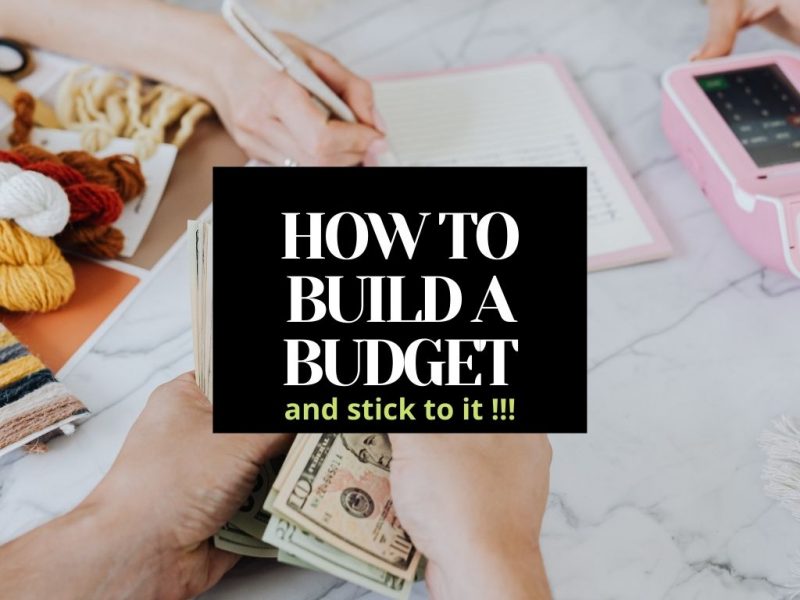

Read more
Popular Topics: Stocks, ETFs, Mutual Funds, Bitcoins, Alternative Investing, Dividends, Stock Options, Credit Cards
Posts by Category: Cash Flow | Credit Cards | Debt Management | General | Invest | Mini Blogs | Insurance & Risk Mgmt | Stock Market Today | Stock Options Trading | Technology
Useful Tools
Student Loan Payoff Calculator | Mortgage Payoff Calculator | CAGR Calculator | Reverse CAGR Calculator | NPV Calculator | IRR Calculator | SIP Calculator | Future Value of Annuity Calculator
Home | Blog
Our Financial Calculator Apps
Page Contents
